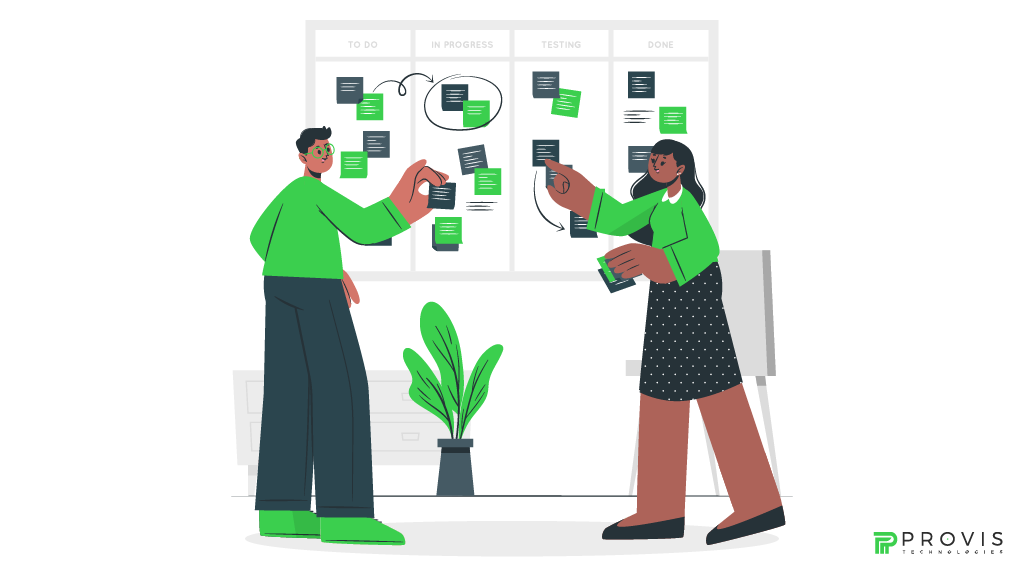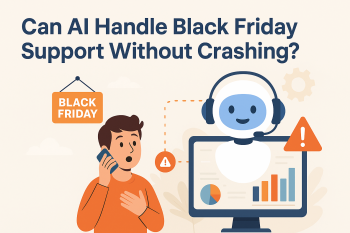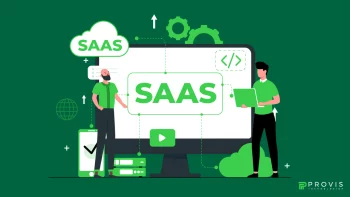Ever had a brilliant business idea but felt overwhelmed by the thought of creating a massive, detailed business plan? Of course, traditional business plans can feel like writing a novel sometimes. That’s where the Lean Canvas can help! Provis Technologies, the Best SaaS Development Company, can guide you in leveraging tools like Lean Canvas to streamline your business planning process.
But, what is a Lean Canvas?
Lean Canvas is all about putting together your business idea on a single page — compact, clear, and laser-focused. Whether you’re a startup founder trying to validate your idea or an established business exploring a new direction, the Lean Canvas offers a fresh and agile approach to planning.
Sounds interesting, right?
In this blog, we’ll understand what is a Lean Canvas, its purpose, the role of key metrics, and how this model can transform your business strategy.
So, without further ado, let’s get started!
What is a Lean Canvas?
Let’s understand in depth —
Understand Lean Canvas as a business model canvas, however, with a modern twist. This new approach, specially designed for lean startups, focuses on delivering value to users.
To put it simply, Lean Canvas breaks business plans into 9 smaller sections, instead of tangling with lengthy business plans.
So, what’s the Lean Canvas structure?
- Problem: It’s about identifying the main problem or pain points that your product or service solves.
- Solution: Now, outline how your product or service will solve the problem.
- Unique Value Proposition (UVP): What unique offering does your product of service have?
- Key metrics: Define your business plan’s key performance metrics to track growth.
- Channels: Outline the marketing and distribution channels and methods to reach your target audience.
- Customer segments: Segregate your audience in different groups.
- Cost structure: Estimate the primary costs involved.
- Revenue streams: Understand how your business will generate income.
- Unfair advantage: Outline some unique and key factors of your service or product that give a competitive edge.
What is the Purpose of a Lean Canvas?
Defining Lean Canvas’ purpose in simple words — it simplifies planning into a one-page framework.
It helps you to avoid the clutter of traditional business plans and focus more on the business idea’s core value, potential customers and key metrics. All in all, it is designed to help you cut off all the distractions and focus towards delivering real value to your audience.
But, why do businesses use Lean Canvas?
Because, the Lean Canvas approach is simple, quick and effective! Unlike traditional detailed business plans that require weeks to get crafted, Lean Canvas involves outlining the fundamentals of your business idea in a few hours only. Moreover, you can easily tweak and make adjustments as your business idea evolves. This gives you a significant advantage over the competition in the fast-changing markets.
Benefits of the Lean Canvas for Startups and Established Businesses
For startups:
- Quick and clear decision-making process.
- Startups can identify potential challenges in the initial stages.
- Startups can refine and validate their ideas with Lean Canvas before they put in significant resources.
For established businesses:
- Established businesses can focus on exploring new products and services.
- Effective changes can be made in the business strategy without having to change the complete existing business model.
- Businesses can focus on solving real business problems and deliver value to the customers.
Lean Canvas vs. Traditional Business Planning
Let’s understand the difference between Lean Canvas vs traditional business planning —
| Lean Canvas | Traditional Business Planning | |
| Format | Concise and one-page framework | Lengthy, detailed document |
| Approach | Action-oriented and adaptable | Focused on static and comprehensive details |
| Focus | Problem-solving and customer value | Financials, forecasts, and extensive analysis |
| Use Case | Quick idea validation and refinement | Comprehensive planning and long-term strategy |
| Suitability | Best for startups and evolving ideas | Ideal for established businesses seeking detailed plans |
What is the Lean Canvas Used For?
As explained earlier, Lean Canvas is a tool designed to simplify business planning. It breaks down complex business ideas into manageable components. Thus, it gets easier to identify risks, find solutions, etc.
Let’s understand Lean Canvas’s practical applications in business development —
Practical Applications in Business Development:
- Idea validation: Test your business idea by mapping out key elements like problems, solutions, and customer segments.
- Risk management: Identify potential challenges early, reducing the risk of costly mistakes.
- Strategic planning: Create a clear roadmap for product development, marketing, and revenue generation.
Examples in Startups and Innovation:
- A tech startup might use Lean Canvas to design a new app by defining its unique value proposition and identifying early adopters. For startups seeking Mobile App Development Services, this approach ensures a clear roadmap to success.
- Established companies can use it to explore new market opportunities or pivot existing strategies without overhauling their entire business model.
What are Early Adopters in Lean Canvas?
Early adopters are the first customers or users who are eager to try out your product or service. These are the people who feel the pain points you’re solving most intensely and are actively looking for a solution. In Lean Canvas, identifying early adopters is crucial because they validate your idea, provide honest feedback, and can even help spread the word about your business.
So, why are early adopters in Lean Canvas important?
Early adopters are like your business’s first cheerleaders. They’re willing to take risks on new ideas, making them perfect for testing your product or service. Their feedback helps refine your offering and ensures it truly solves their problems.
How to Identify Early Adopters:
- Look for people already seeking solutions to the problem you’re solving.
- Engage with communities or forums where these potential users discuss their challenges.
- Use surveys or interviews to understand their needs and willingness to try something new.
Real-World Examples:
- Tech enthusiasts lining up for the latest gadget.
- Health-conscious consumers are eager to try innovative fitness apps.
- Small businesses adopting new software to streamline operations.
What are the Key Metrics in Lean Canvas?
Key metrics in the Lean Canvas are the measurable indicators that track the success and performance of your business. They act as your business’s scorecard, helping you monitor progress, identify areas of improvement, and make informed decisions. These metrics ensure that you’re not flying blind but are instead guided by data to achieve your goals.
Key metrics are specific, actionable, and relevant data points tied to your business objectives. Their purpose is to provide insights into how well your solution addresses the problem and how efficiently your business operates.
Here are some key examples —
- For a SaaS company: Monthly Recurring Revenue (MRR) or Customer Retention Rate.
- For an e-commerce business: Conversion Rate or Average Order Value.
- For a fitness app: Daily Active Users or Subscription Growth.
Key metrics in different industries:
- Healthcare: Patient satisfaction scores or appointment retention rates.
- Retail: Foot traffic and sales per square foot.
- Tech startups: User acquisition cost and churn rate.
Conclusion
All in all, the Lean Canvas is really a great way to plan your business ideas and ensure significant growth.
So, whether you’re a startup or an established business looking to innovate, its high time to use the Lean Canvas!
Frequently Asked Questions
Q1: What is a Lean Canvas?
A Lean Canvas is a one-page business framework designed to simplify and validate ideas quickly by focusing on key aspects like problems, solutions, and customers.
Q2: What is the purpose of a Lean Canvas?
The purpose of Lean Canvas is to streamline business planning, prioritize problem-solving, and maximize customer value.
Q3: What are early adopters in Lean Canvas?
Early adopters are your first users who experience the problem most intensely and are eager to try your solution.
Q4: What are key metrics in Lean Canvas?
Key metrics are measurable indicators used to track your business’s performance and success, ensuring data-driven decisions.
Q5: What is a Lean Canvas business model?
A Lean Canvas business model is a simplified, action-oriented version of traditional business plans, focusing on solving problems and creating value.
Written By
Author's Picks
- Transform Your Business with a WordPress E-commerce Website
- 29/03/2024
- AI-Powered Predictive Analysis: What It Means for E-commerce Development
- 07/11/2024
- What is B2B Commerce?
- 13/11/2024
Categories
- AI for Startups
- AI in Web Development
- AI Integration
- AI Platforms
- AI Prompt
- AI Tools
- AI Trading Software
- Android App
- Android vs iOS Development
- Angular
- API
- API Development
- App
- app development
- App Idea
- App User Feedback
- Application
- Artificial Intelligence
- Audit Services
- Automotive Industry
- Awards and Recognition
- Business Consulting
- Business Website
- Chatbots
- CRM
- CRM for Financial Advisors
- Custom CRM
- Custom SaaS
- Custom Website
- Customer Service
- dashboard design
- Developing a Mobile App
- Digital Business
- E-commerce
- EMR Integration
- Finance
- Financial Advisors
- Financial Advisors
- GIT
- Health Insurance
- iOS App
- iOS App Development
- IoT Mobile App Development
- IoT Platforms
- IT Audit Services
- IT Consulting
- IT Strategies
- Java Development
- Laravel
- Lean Canvas
- Learning Management System
- Logistics Apps
- Mobile App Development
- MVP
- Native App
- News Aggregator Site
- OTT
- Outsourcing IT
- Payment Gateway
- predictive analysis
- Product Launch Strategy
- Progressive Web App (PWA)
- Prototype
- Recommender Systems
- Ruby
- SaaS
- SaaS Application
- SaaS Business
- SaaS Company
- SaaS Development
- SaaS Product
- SaaS Project
- Sales Funnel
- SEO
- Shopping Cart
- Software Development
- SSL and TLS
- Startup Checklist
- Technology
- Tetradic Color Scheme
- UI/UX Design Company
- Unit Testing
- User Flow
- User Testing
- Web Development
- Web Performance Optimization
- website Maintenance Services
- Website Migration Service
- Website Speed Optimization
- WooCommerce
- WordPress





